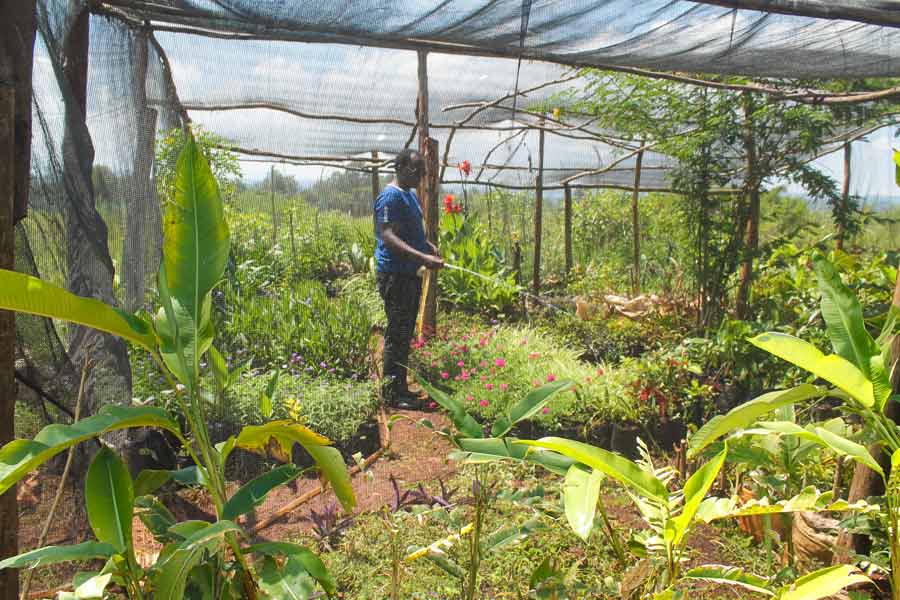As the elegant silhouette of Africa’s first Bahá’í Temple ascends against the horizon, an intricate tapestry of anticipation unfolds among diverse communities. This moment transcends mere architectural achievement; it represents a profound socio-spiritual phenomenon that beckons reflection on the Bahá’í teachings and their resonances. This article endeavors to elucidate the manifold implications of the temple’s emergence, which serves not only as a sanctuary of worship but a catalyst for unity, hope, and cultural metamorphosis.
The Bahá’í Temple in Africa is not merely an architectural marvel, characterized by its harmonious design and inviting ambiance. Rather, it epitomizes the core values of the Bahá’í Faith—unity in diversity, the sanctity of the individual, and the importance of global togetherness. Its rising structure encapsulates an ethos that reveres every individual’s intrinsic worth and cultivates a sense of belonging amongst various communities. This temple stands as a beacon, inviting people of all backgrounds, thus reinforcing the Bahá’í principle that the reconciliation of differences is essential for the advancement of humanity.
Anticipation around the temple’s inauguration mirrors a collective yearning for an inclusive space where all can congregate in shared reverence and collaboration. This excitement should not be construed solely as fascination with a new edifice; instead, it reflects deeper human inclinations toward spiritual fulfillment and community engagement. In cultures where traditional religious institutions may struggle to resonate with the emergent philosophical and moral inquiries of society, the Bahá’í Temple emerges as a refreshing alternative—a sanctuary advocating for spiritual illumination and unity amid diversity.
The social ramifications of the temple’s construction are noteworthy. The location of the temple, amid diverse ethnic groups, symbolizes the Bahá’í Faith’s commitment to promoting dialogue and understanding. It provides a platform for addressing often divisive societal topics, allowing individuals to partake in constructive discourse that fosters empathy and respect. The anticipation surrounding its completion resonates profoundly with the Bahá’í teaching of collective advancement—where the edifice is not merely about bricks and mortar but a physical representation of a collective aspiration toward harmony and collaboration.
Further exploration reveals how setbacks and challenges during the temple’s construction have catalyzed a stronger sense of community involvement. Local populations have engaged in volunteer initiatives, contributing labor and resources toward the building’s completion. This organic participation acts as a microcosm of the Bahá’í ideal of service to humanity. Such acts of collective service cultivate a sense of ownership and agency within the community, fostering relationships that transcend superficial divisions. The very act of building a temple, thus, becomes a metaphor for constructing bridges among people.
Moreover, the spectacle of a grand temple elevates spiritual aspirations, stirring individuals towards introspection and meaningful engagement with their own beliefs. As the temple rises, questions about faith and its role in contemporary society come to the forefront. What does it mean to belong to a faith that espouses the oneness of humanity? How does this oneness translate into action in local contexts? The anticipation surrounding the temple encourages individuals to grapple with these questions, inspiring a deeper understanding of their personal spiritual journeys.
The architectural design of the temple also serves as a point of contemplation and reverence. With its intricate geometry and luminous presence, it symbolizes the enlightenment that the Bahá’í teachings aim to impart. The nature of its structure reflects the converging lines of various architectural traditions, representing an amalgamation of cultural influences that echo the Bahá’í principle of inclusivity. The temple stands not only as a place of worship but also as an emblem of cultural richness and creative synergy from across the continent—an assertion that beauty and faith can coexist in myriad forms.
As we reflect on the fervor that envelops the temple’s establishment, it is essential to recognize the multi-dimensional impact of this undertaking. For many, the excitement is about witnessing a physical manifestation of their spiritual ideals. For others, it embodies hope for a future characterized by equality, justice, and collaboration. The temple serves not only as a hub for worship but also as an incubator for ideas and a crucible where transformative dialogue can flourish.
Ultimately, the anticipation surrounding Africa’s Bahá’í Temple elicits a response that is both emotional and intellectual. It compels individuals from various backgrounds to unite in a pursuit of understanding—a pursuit that extends beyond the temple’s walls and into everyday life. It fosters a culture where discussions about spirituality, social justice, and ethical living become commonplace, driven by a shared aspiration to manifest the teachings of Bahá’u’lláh in actionable ways.
Consequently, as we await the ceremonial opening of this monumental project, it is essential to recognize that the temple’s significance ultimately resides not solely in its edifice but in the enduring spirit of unity and service that it embodies. The anticipation builds, drawing forth a collective vision for a world where humanity thrives in concordance, inspired by the profound ideals that the Bahá’í teachings espouse.
